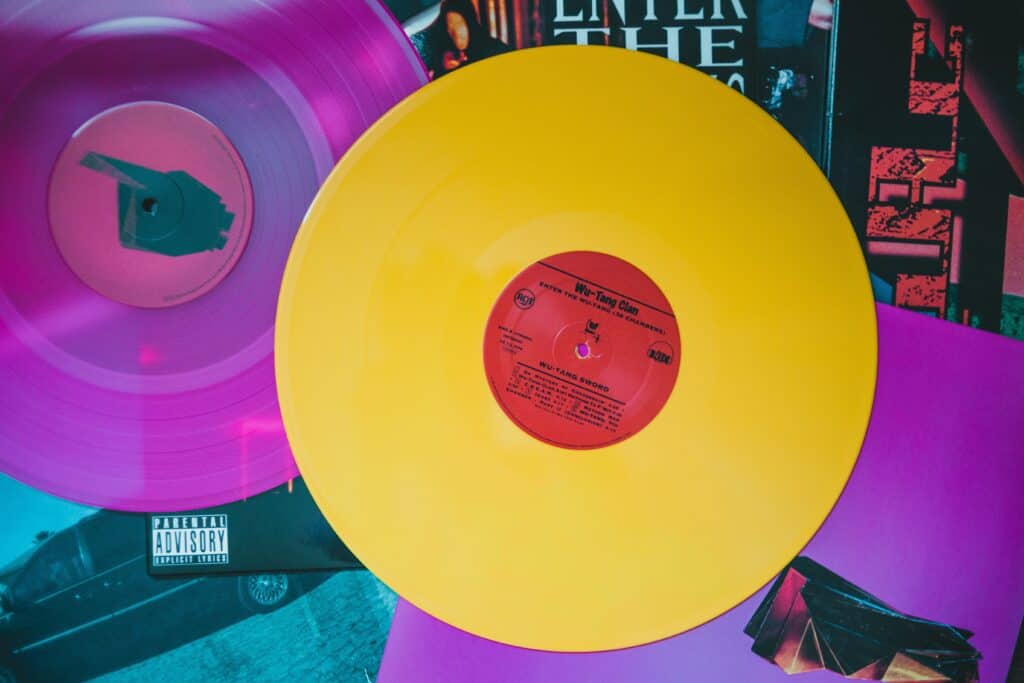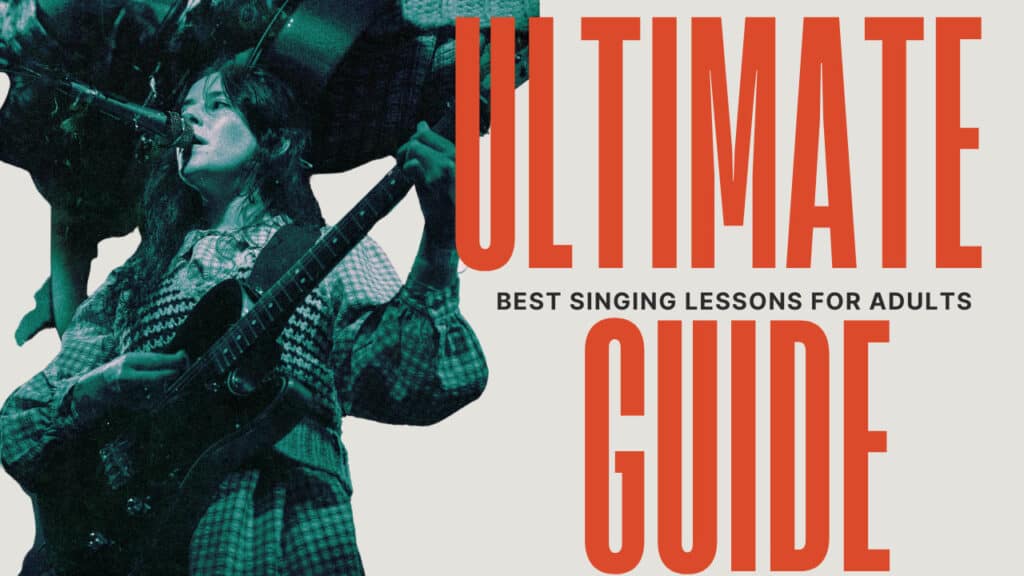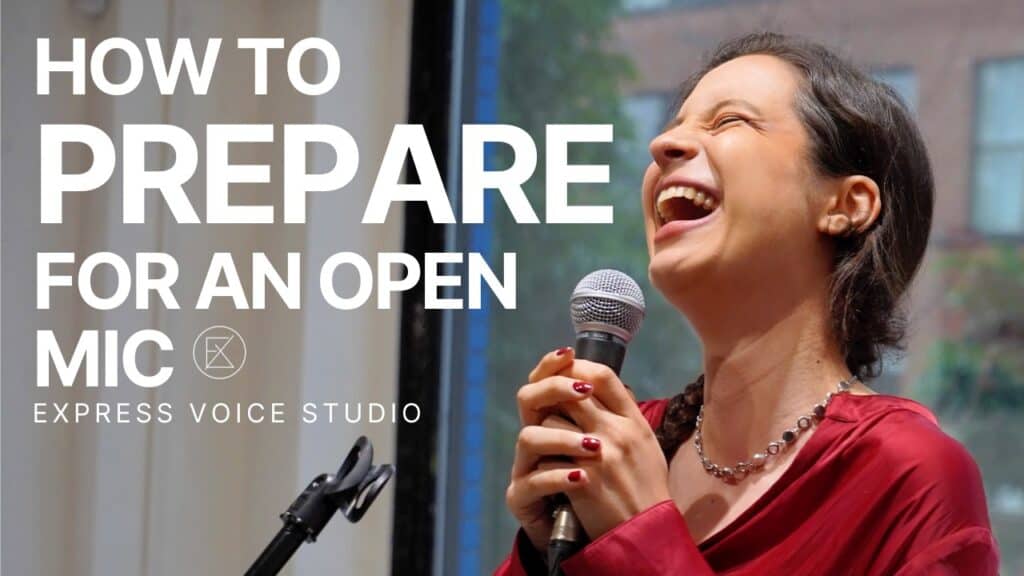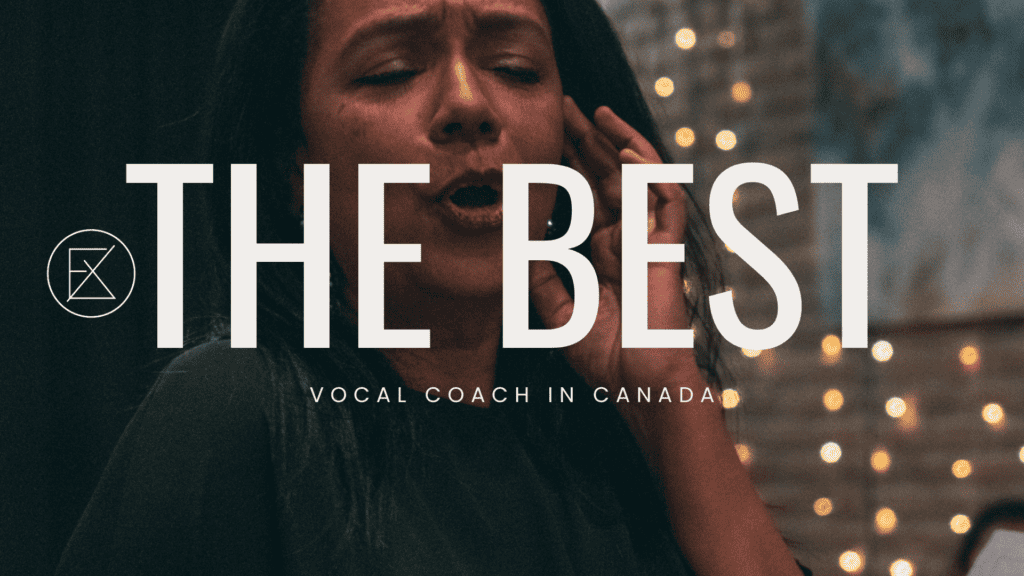How to Sing Better: How To Sing RNB
Table of Contents
- Author: Kelsey Vaz
- November 3, 2025
If you’re wondering how to sing RNB and truly be a strong singer but feel stuck because you don’t know where to start, or you’re afraid you’re not talented enough, you’re in the right place.
I’ve been exactly where you are in your vocal journey.
I still remember the first time I stepped onto a stage in Toronto. My hands were shaking, my voice felt trapped in my throat, and I genuinely thought I might pass out. Friends told me I was average. I doubted whether I had what it took.
In this guide, you’ll learn how to overcome stage fright, fix common RnB vocal problems (like going nasal on high notes), master vocal runs, get paid gigs, navigate the music industry, and build the skills you need to turn your passion into a career.
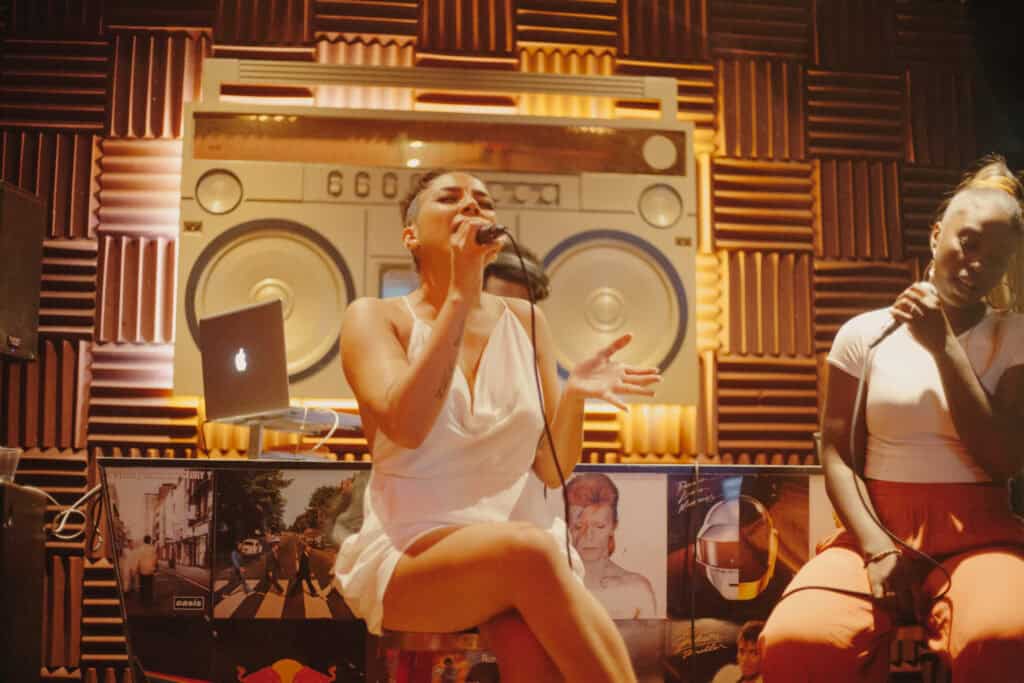
About The Author
Kelsey Vaz is a Toronto-based RnB singer, songwriter, and vocal coach at Express Voice Studio. With years of experience navigating the music scene, Kelsey Vaz has transformed from a stage-frightened beginner into a confident performer who regularly connects with audiences across Toronto’s vibrant music community. Her journey through the challenges of stage anxiety, vocal development, and building a sustainable music career has shaped her teaching philosophy- one that emphasizes healthy singing, patience, creative practice, and treating your artistry as a business.
When she’s not performing at local venues or recording new music, Kelsey gigs as a background vocalist, is a music teacher at daycares, and helps aspiring singers develop their vocal technique, overcome performance anxiety, and find their unique vocal style in the RnB genre. She believes that every singer’s journey is different, but with consistent practice and the right guidance, anyone can develop the skills to share their art with the world.

Summary: 5 Hot Takeaways
1. Talent Isn't the Problem.
But, Persistence Is the Solution. You don’t need to be naturally gifted to become a great RnB singer. Every successful artist was once called “average” or told they couldn’t sing. What separates those who make it from those who don’t is regular practice, creative experimentation, and refusing to quit when feedback stings.
2. Fix Nasal Tone
Fix Nasal Tone by Lifting Your Soft Palate and Supporting from Your Diaphragm.
If you sound nasal on high notes, it’s likely because your soft palate is lowered, directing sound through your nose—a habit that can be improved with ear training and awareness. Practice the “yawn” feeling to lift your soft palate, and push air from your core, not your throat. I also teach singers to understand their unique vocal tones and explore different placements and dynamics. By experimenting with techniques like the nasal-tone-fix, you learn to treat your voice like an instrument—developing creativity, control, and clarity in your sound.
3. Master RnB Runs
Master RnB Runs by Slowing Down, Recording Yourself, and Making Them Your Own.
Vocal runs aren’t magic—they’re fast scales with rhythm. Slow down the run to half speed, practice each note cleanly, record yourself to catch mistakes, and gradually increase speed. Once you’ve mastered the technique, add your own flavor to develop your unique sound.
4. Treat Your Music Like a Business
Treat your music like a business from Day One.
Learn how to publish and distribute your music, track all spending and income, understand royalties, and build your fanbase before worrying about industry trends. Your music is your business—manage it like one, and you’ll avoid costly mistakes that derail careers.
4. Start Small
Start Small, Perform Often, and Build Your Network Locally.
You don’t need a huge platform to start. Attend open mics, post covers online, connect with your local music community, and check your city’s arts council for gigs. Most paid opportunities come from relationships you build in person—not from waiting to be discovered online.
Let me be honest with you: learning how to be a better singer isn't just about hitting the right notes. The biggest battles I've faced weren't technical- they were mental.
Kelsey Vaz
The Mental Challenge When You Want to Be a Better Singer
Stage fright nearly killed my career before it started.
I’d practice for hours at home, sound amazing, and then freeze the second I saw an audience. The anxiety was crushing. I’d obsess over every little mistake, replay negative feedback on loop, and convince myself I wasn’t good enough.
Here’s what actually helped me become a confident singer:
- Start small: I began at tiny open mics where maybe five people showed up. Low stakes meant lower anxiety.
- Reframe feedback: Instead of taking criticism personally, I learned to see it as data. What can I improve? What’s working?
- Body awareness: Your body needs time to adjust to performing. I practiced breathing exercises and grounding techniques before every show.
- Repetition: The more I performed, the less scary it became. Simple as that.
Dealing with people who say you can't sing
Here’s something I wish someone had told me earlier: people will always have opinions about your voice, no matter how much singing practice you do. Some friends told me I was average. Some said I should give up. Some said I didn’t have “the voice” for RnB. Most people giving you feedback aren’t vocal coaches or trained musicians—they’re just sharing their personal taste. What truly matters is whether you’re improving, not whether someone thinks you’re a bad singer. Are you better than you were six months ago? That’s your real measure of success. I’ve seen 15-year-olds post covers online, get told by friends they can’t sing, and nearly give up on their dreams. But here’s the truth: you have potential. If you don’t quit, you’ll get better—that’s not motivational fluff, that’s how vocal development works.
Overcoming stage fright starts with shifting your perspective. It’s easy to get caught up in the need for public approval when you’re singing, but remember: we sing because we love music. It’s the joy of embracing the art that drives us, not the need for validation. When you step onto the stage, remind yourself that your audience isn’t there to judge you—they’re there to connect with the music, just like you are. Focus on that connection first. Prioritize the music, and let the audience experience it with you. The approval you seek will naturally follow when you’re truly immersed in the music.
Feel like you need a professional's opinion on your RNB voice?
How Long Does It Take to Get Good at RNB?
People always ask me: “How long until I’m good enough?”
Here’s the truth: I’ve been singing for many years, and I’m still learning. But that doesn’t mean progress takes forever or that you will never be good enough for the industry: singing is a lifelong journey and requires taking care of your vocal chords, physical health, and mental health forever! This music is so much about passion. You have to find yours!
Focus on one thing at a time: tone, runs, breath control, stage presence, and remember to stay hydrated.
Don’t burn out trying to master everything at once, remember its a marathon.
Your body and mind need time to catch up to certain songs and techniques. Practice is important, but so is creative practice. I started improvising over backing tracks, experimenting with melodies, and recording myself to hear what worked. That’s when I really started to sound like myself.
- Pick one skill (like breath control or vocal runs)
- Practice it consistently for 2-3 weeks
- Give your body time to adjust—your vocal cords are muscles, and they need rest
- Move to the next skill
- Study The Greats: Mastery start with imitation

How to Sing RnB: Solving the Most Common Technical Problems
Let me address the specific challenges that come up when you’re learning how to sing RnB—because I’ve dealt with every single one of them.
Problem #1: Going Nasal on Higher Notes
This was one of my biggest struggles with my singing voice . When I’d try to hit higher notes, my voice would get thin and nasal. It sounded weak and strained.
Here’s what fixed it for me:
Solution A. Open your mouth more vertically:
When you go higher in your range, your jaw needs to drop. I used to keep my jaw locked, which pushed all the sound into my nose. Practice singing scales while consciously opening your mouth wider as you go up. Think vertical space, not horizontal.
Solution B. Relax your neck:
Tension in your neck closes your throat and forces sound through your nose. Before you sing, roll your shoulders back, gently stretch your neck side to side, and consciously release any tightness.
Solution C. Soft palate awareness:
Your soft palate (the back of your throat) needs to lift when you sing higher notes. Practice yawning—that’s what it should feel like. When you keep your soft palate low, air goes through your nose instead of your mouth, creating that nasal sound.
Solution D. Support from your diaphragm:
Higher notes need more breath support, not more throat tension. Practice breathing exercises where you engage your lower abdomen. When you go for a high note, push from your core, not your throat.
Solution E. Don't reach for the notes:
When you physically reach up or tilt your head back, you’re actually closing your throat and making it harder to hit high notes. Keep your chin level or slightly down, and imagine the sound coming from deep in your chest, not from your head. Adjust your placement as needed and play with how much power you give to your higher belted notes, many singers over-anticipate how much force is required. Often, a lighter, more focused approach gives you a cleaner, more controlled sound.
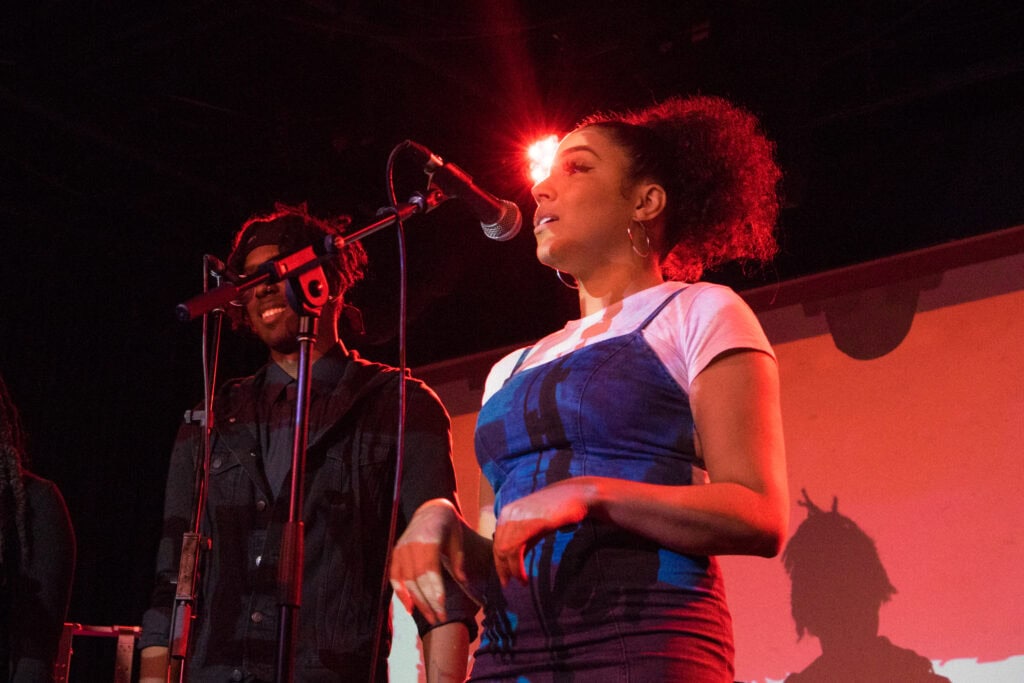
Problem #2: Struggling with Vocal Runs and Variations
RnB is full of runs, riffs, and variations (those quick note changes that artists like Usher, Ne-Yo, and Chris Brown make look effortless). They’re not effortless. They take practice. Here’s my system for mastering RnB runs:
Solution A. Pick one RnB recording you like that's not too complex:
Start with something achievable. Don’t try to copy Mariah Carey’s whistle tone runs on day one. Find a simple riff in a song you love.
Solution B. Listen carefully several times:
Before you try to sing it, listen to the run 10-20 times. Understand the rhythm, the notes, and the feeling behind it.
Solution C. Slow it down to half speed:
Use YouTube’s playback speed feature to slow the song down. Practice the run slowly until you can hit every single note cleanly.
Solution D. Use scales:
Practice your major and minor scales every day. Runs are just fast scales with rhythm. The more comfortable you are with scales, the easier runs become. Pentatonic scales are especially important for RnB.
Solution E: Record yourself doing the vocal exercises:
This is non-negotiable. You think you’re hitting the notes, but when you listen back, you’ll hear where you’re sliding or missing pitches. Fix those spots.
Problem #3: Match Pitch- Going Flat on High Notes
When your jaw is locked and your neck is tense, your pitch tends to go flat on higher notes because you’re restricting airflow and creating tension that pulls the note down. The fix? Everything I mentioned about opening your mouth vertically and relaxing your neck, as these aren’t separate problems, they’re connected.
You can also try adjusting your placement. Sometimes, using a “bottom-up” approach in the high register helps. Adopt a more open, resonant (operatic-style) placement, and if needed, slide up to the target note starting from the same note an octave lower. This creates a smoother, more supported transition into higher notes.
Problem #4: Sounding Like Yourself (Not Just a Copy)
When I first started singing RnB, I was basically trying to mirror my favorite artists. I sounded like a cheap knockoff. The breakthrough came when I stopped trying to copy anyone else and started asking: What does my voice naturally do well?
For me, it was emotional delivery and softer, intimate moments. I leaned into that instead of trying to belt like someone with a completely different voice type. My suggestions for you:
- Find your strengths:
Are you better at smooth, controlled notes or powerful belting? Do you have a unique tone or texture? Play to those strengths.
- Study multiple artists:
Don’t just listen to one RnB singer. Study a wide range of artists like Stevie Wonder, Michael Jackson, Destiny’s Child, SWV, Brandy, Lauryn Hill, D’Angelo, Erykah Badu, Frank Ocean, Chris Brown, Aretha Franklin, Beyoncé, and Musiq Soulchild. Notice how different they all sound. That is the point; RnB has room for your voice too.
- Immerse yourself in the classics:
Immerse yourself in all types of songs within the genre and find what resonates with you. Make a solid playlist of classic and contemporary RnB and soul, and study the greats. Do some deep listening, as this is how you connect not only with the lyrics, but also with the creative and intricate production that drives the listening experience.

Understanding RnB: It's About Emotion, Not Just Technique
RnB is not just a genre—it's about feelings, guts, soul, passion, and emotion.
Kelsey Vaz
How to Sing with Emotion and Soul
- Be affected by the song: Before you perform, spend time with the lyrics. What story are they telling? Have you experienced something similar? Connect the song to your own life.
- Feel what you’re singing about: RnB is mostly about love and heartbreaks. If you’re singing about heartbreak, tap into a time you felt that way. If you’re singing about joy, remember what that feels like in your body.
- Use conversational phrasing: RnB phrases are shorter and more natural, like how you’d actually speak. Instead of holding one long breath for an entire line, break it up naturally. Take breaths where it makes sense in the story.
- Sing just behind the beat: This is a profound skill that gives RnB its laid-back, soulful feel. Listen to Aretha Franklin, Stevie Wonder, or Chaka Khan. Notice how they don’t rush—they sit back in the pocket of the rhythm. This takes practice and a deep understanding of timing.
- Master dynamics: RnB isn’t about belting all the time. It’s about knowing when to pull back and when to let loose. Practice singing softly with control—it’s harder than it sounds. Then practice building from soft to powerful within one phrase.
The Technical Skills You Need to Master for RnB
1. Belting
Belting is loud, powerful singing that comes from your chest voice. Artists like Aretha Franklin, Patti LaBelle, and Jennifer Hudson are master belters.
To belt safely:
- Support from your diaphragm, not your throat
- Keep your soft palate lifted
- Don’t push or strain
- Build up gradually—don’t try to belt for hours when you’re starting out
2. Mixed Voice & Chest Voice
Mixed voice blends your chest voice and head voice, allowing you to sing higher notes with power without straining. This is essential for RnB. Practice sliding from chest voice to head voice on a single note, trying to smooth out the break between them. You will definitely need to work on a strong chest voice, which means having a lot of color in your lower notes.
Healthy vocal technique is founded on your ability to access this part of your voice and mastering it will make you sing naturally, strengthen your vocal muscles, and help you avoid vocal fatigue.
3. Vocal Runs and Riffs
We covered this earlier, but it’s worth repeating: runs are based on scales. Practice pentatonic scales daily, and you’ll find runs getting easier.
4. Gritty Textures and Rasp
That soulful, gritty sound you hear in RnB comes from allowing a bit of air and texture into your tone. Artists like Ray Charles, Tina Turner, and Sam Cooke used this beautifully. Be careful with this technique—too much can damage your voice. Use it sparingly for emotional effect.
5. Twang Like Chaka Khan
Twang is that bright, edgy sound you hear in artists like Chaka Khan. It’s created by narrowing the space in your throat slightly and using a wider mouth position (like smiling).
6. Blue Notes
Blue notes are slightly flattened notes (usually the 3rd, 5th, or 7th of a scale) that give RnB and blues their distinctive sound. These are the notes that make you feel something. Work with a vocal coach who can teach you about music theory and help develop a style around these notes with you.
7. Falsetto and Head Voice
Being able to flip into falsetto (like Ray Charles or Elton John did) adds variety and emotional impact to your performances.
8. Breath Control
RnB phrases can be long and complex. You need solid breath support to sustain notes and execute runs without running out of air. Practice breathing exercises daily—inhale for 4 counts, hold for 4, exhale for 8.
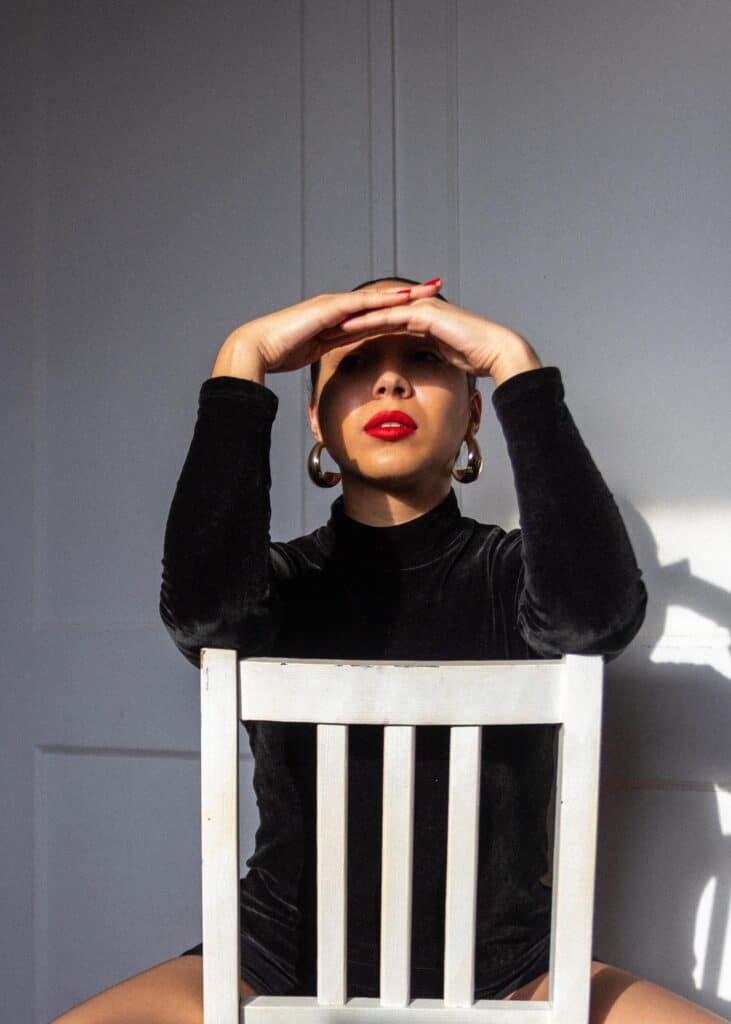
Surprise your favorite singer with a thoughtful gift that will help them in their music-making journey, like a Smartphone Studio Mic, a Humidifier, Blank notebooks, or pay for their expense to take part in a local singing competition. These are all great ideas for singer gifts.
Show your appreciation for their performance with a stunning bouquet of long-stemmed roses – red is customary, but you can choose other colors too!
Surprise a music-loving man in your life with something truly special – the notebook to work on beat production or custom vinyl lyrics print and soundwave wall art will make great gifts.
We recommend going into a music store WITH your singer. There are so many tech gadgets for singers and cool gadgets it can be overwhelming. The help of a professional in the store will be crucial so they can understand what the singers goals are and what tech will be their best choices.



